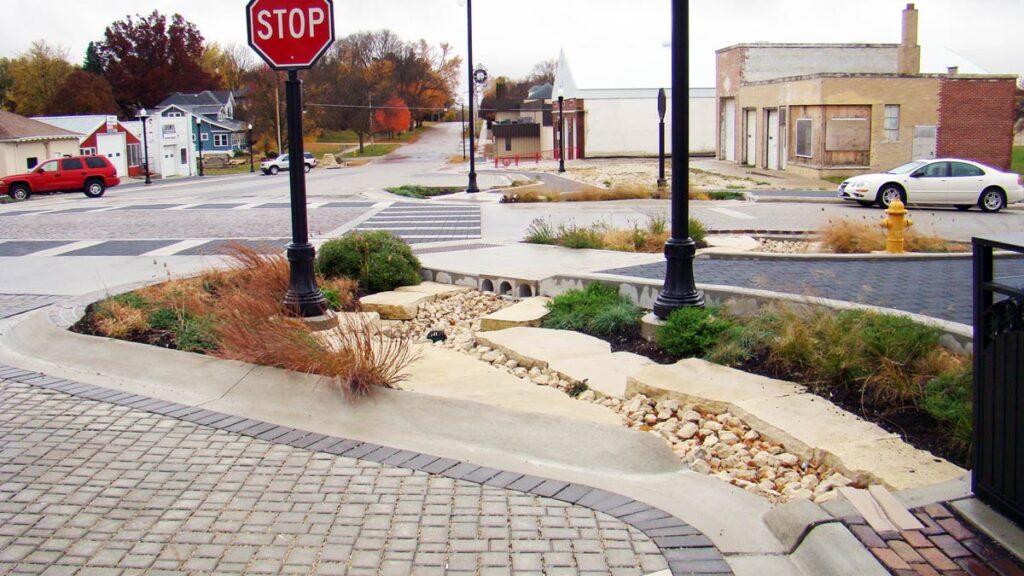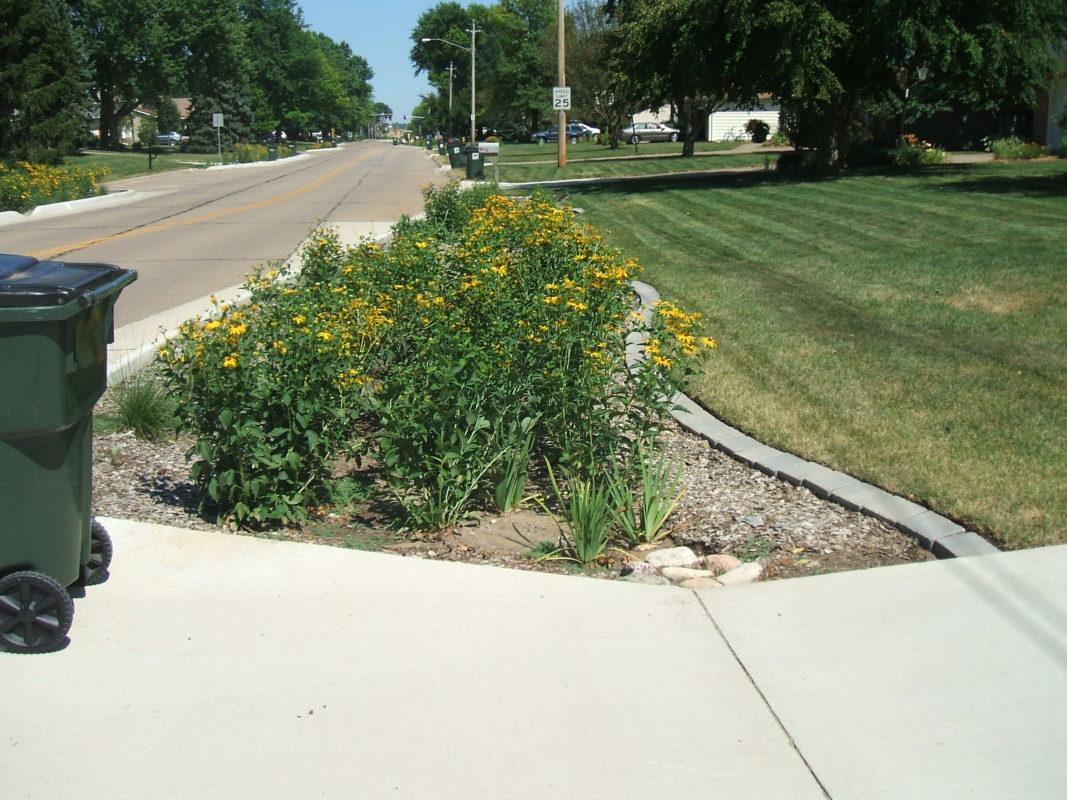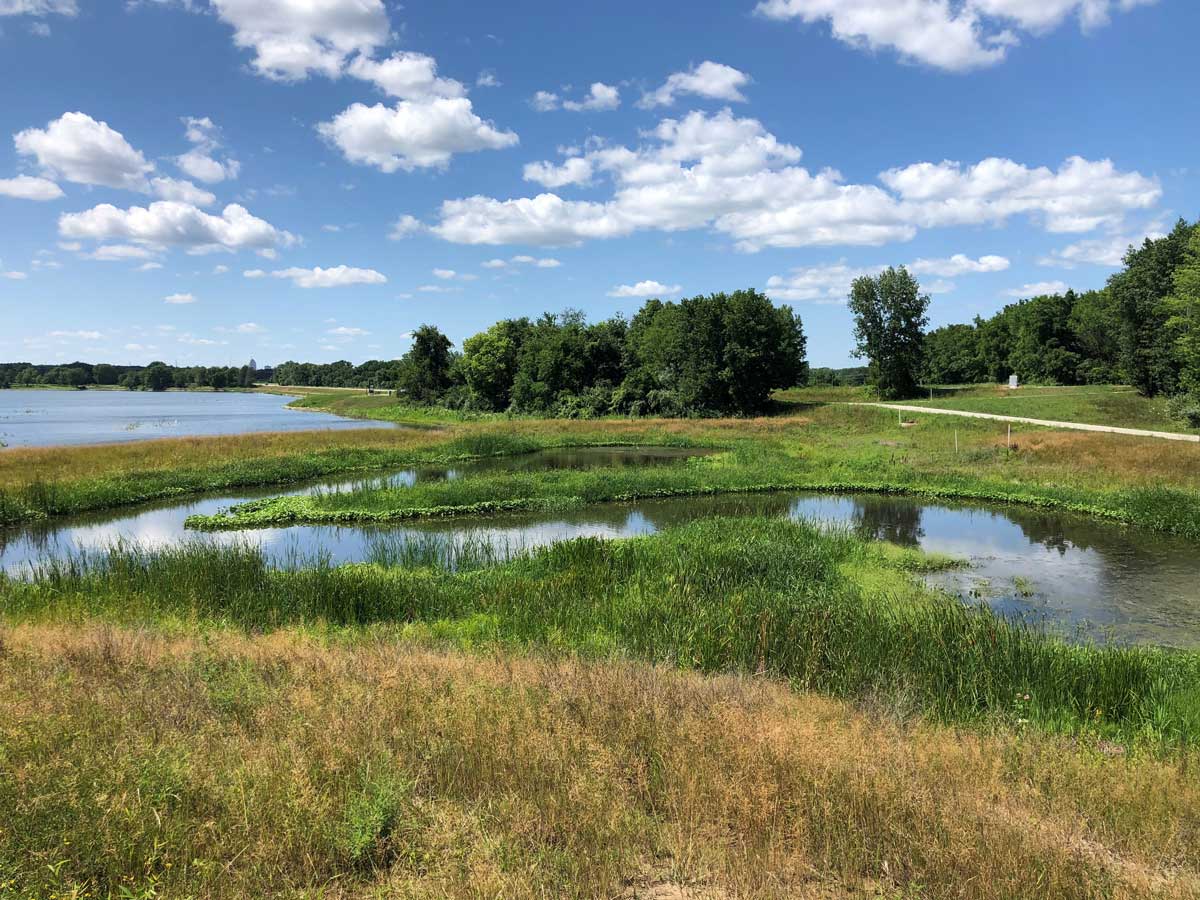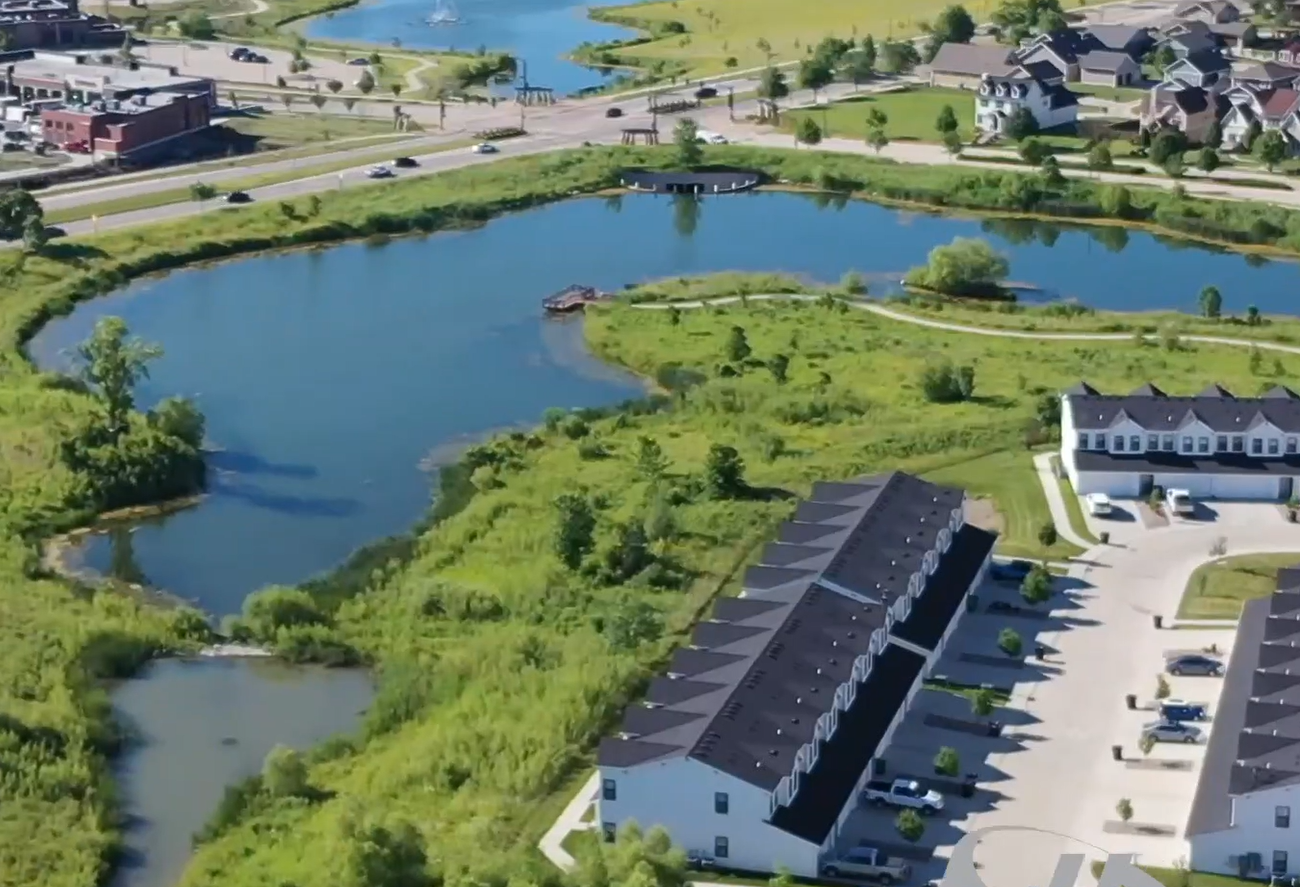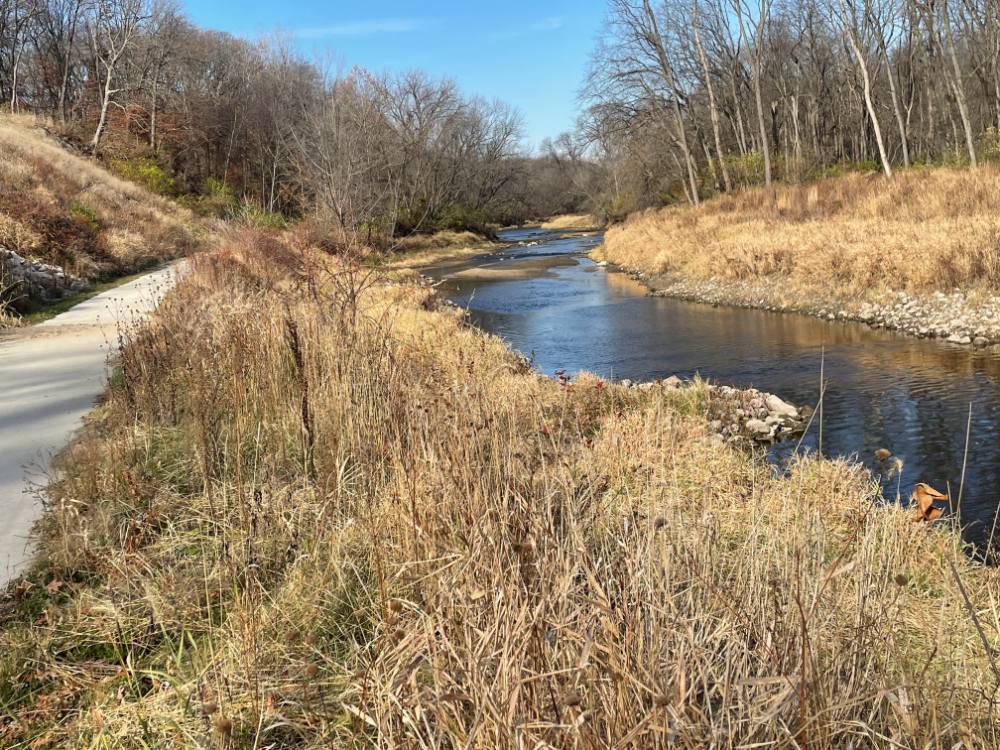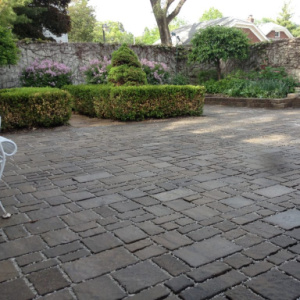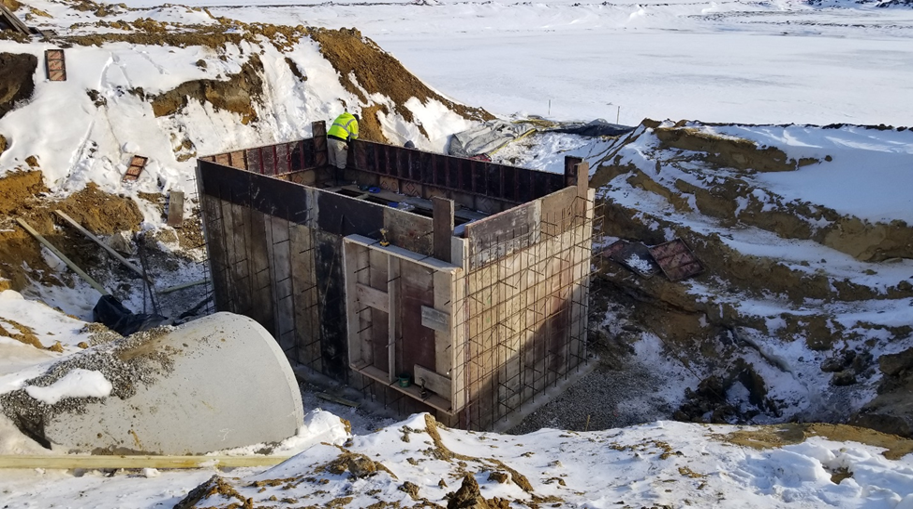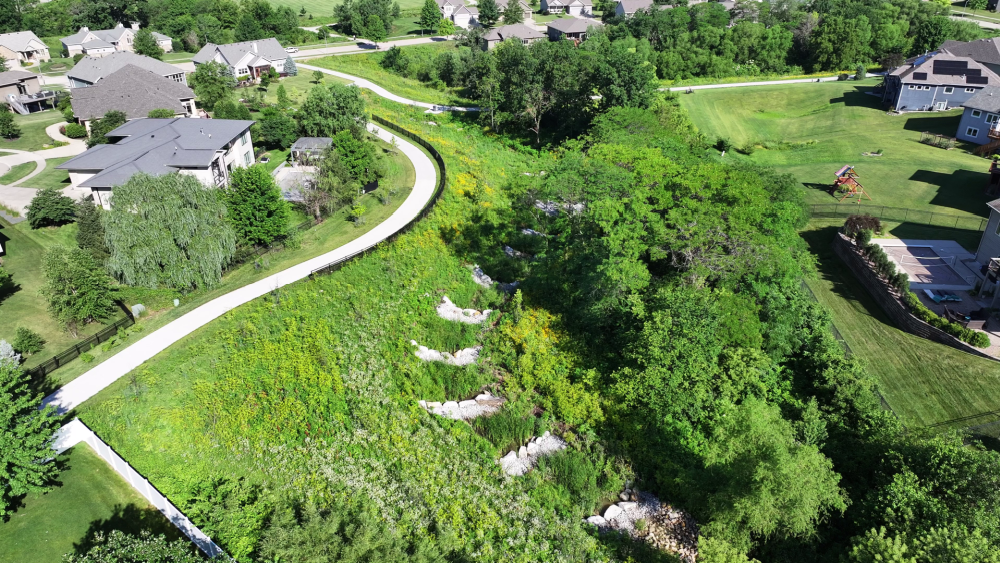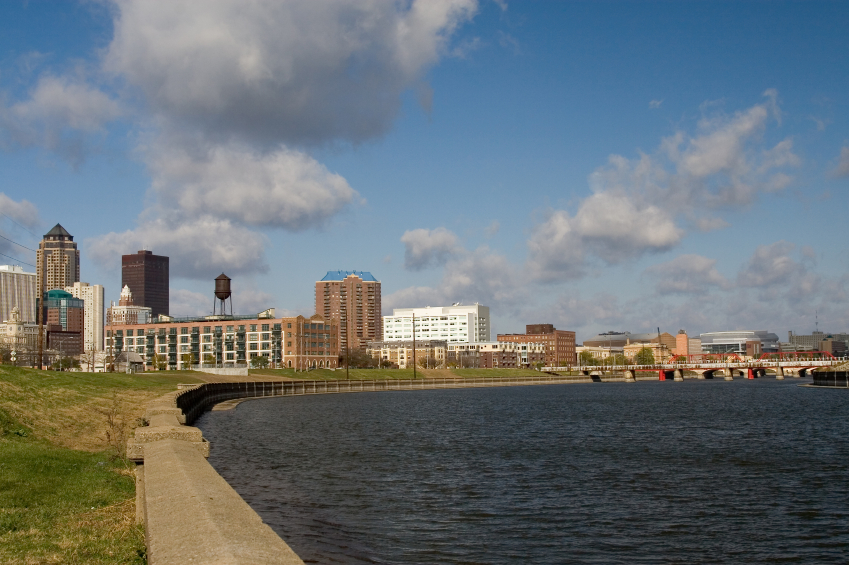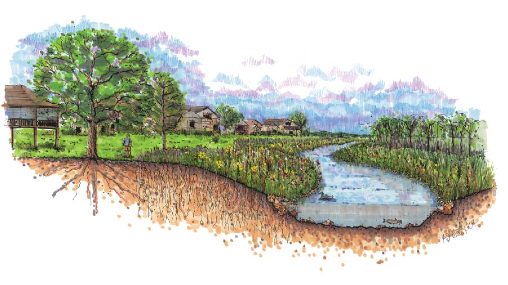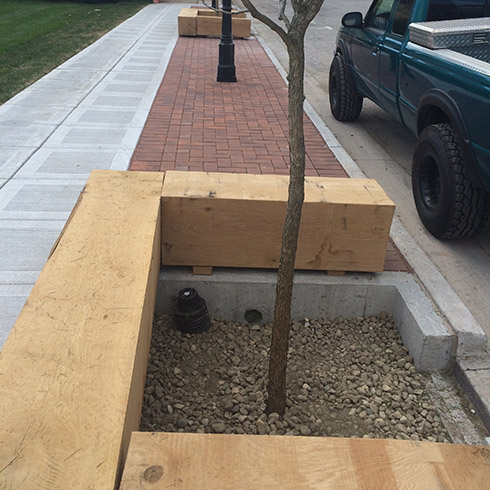Traditional “gray” infrastructure like storm sewers and pipes is designed with a single purpose: moving water away as quickly as possible. Green Infrastructure (GI) takes a different approach by mimicking natural processes to manage rainfall where it falls.
Green infrastructure practices use a combination of specially designed soils, plants, and engineered systems to capture, filter, and slowly release stormwater. By restoring the natural functions of the landscape, these systems reduce runoff while improving water quality.
Benefits for communities and residents
Green infrastructure delivers multiple benefits beyond stormwater management:
- Reduced flooding: Captures rainfall before it contributes to local flooding
- Improved water quality: Filters pollutants from runoff before it reaches streams and lakes
- Enhanced property value: Creates attractive landscapes that can increase property values
- Cost savings: Often costs less over time than conventional drainage systems
- Climate resilience: Helps communities adapt to changing rainfall patterns
- Habitat creation: Provides food and shelter for pollinators and wildlife
Integrated stormwater systems
Effective stormwater management is best achieved through an integrated, multi-scale approach that transforms water management from a single-solution challenge to a comprehensive system. Like a relay race, this method passes runoff through different infrastructure practices, each playing a crucial role in managing rainfall and reducing environmental impact.
The approach layers green infrastructure across three scales: property, neighborhood, and community levels. At the property level, practices including rain gardens and permeable driveways capture initial rainfall. When these small-scale features reach capacity, neighborhood solutions like bioswales and tree-lined street trenches take over, filtering and slowing runoff. Finally, community-scale systems such as constructed wetlands and detention basins provide ultimate treatment and storage before water enters natural waterways.
This integrated system offers multiple benefits: enhanced resilience to varying rainfall intensities, improved pollutant removal, distributed maintenance responsibilities, and increased community awareness of watershed health. Real-world implementations range from residential developments with roof runoff directed through rain gardens and bioswales to urban districts using disconnected downspouts, permeable surfaces, and advanced stormwater conveyance systems. By mimicking natural hydrology, these interconnected green infrastructure practices create more effective, sustainable water management solutions that deliver environmental, social, and economic advantages.
